The Montana mountain scenery is a feast for the senses. As we delve into the heart of Montana’s mountainous allure, you’ll discover 11 of the most breathtaking views that the state has to offer.
From the towering heights of the Rocky Mountains to the wild, untamed beauty of the Beartooths and the sweeping vistas of the Bitterroot Range, I’ll share with you not just the sights but the history of these places.
My own experiences hiking these trails and gazing upon their peaks have left an indelible mark on my memory, and I’m here to guide you through what could be your next great adventure.
- Related article: Montana’s Scenery
Are you ready to uncover the secrets of the Big Sky Country’s most stunning landscapes? Let’s embark on this visual odyssey together, where each turn on the trail is a new revelation and every summit offers a fresh perspective.
7 Key Takeaways on Must-See Montana Mountain Views
- The Rocky Mountains in Montana offer a diverse range of activities, from hiking to skiing, and are home to Glacier National Park.
- The Beartooth Mountains are a rugged paradise with the highest point in Montana, Granite Peak, and are an ideal gateway to Yellowstone National Park.
- The Bitterroot Mountains are Montana’s crown jewel, offering expansive alpine landscapes, rich biodiversity, and a gateway to pristine wilderness areas.
- The Bighorn Mountains straddle Montana and Wyoming, featuring diverse topography, scenic drives, and the stunning Bighorn Canyon National Recreation Area.
- The Crazy Mountains, a sub-range of the Rockies, offer dramatic landscapes with jagged peaks and over 40 lakes, providing a playground for outdoor activities.
- The Madison Range combines historical significance with natural grandeur, offering panoramic views, diverse wildlife, and a sense of solitude.
- The Mission Mountains in northwestern Montana are rugged and serene, featuring glaciers, well-trodden paths, and the expansive Mission Mountain Wilderness Area.
11 Must-See Montana Mountain Views
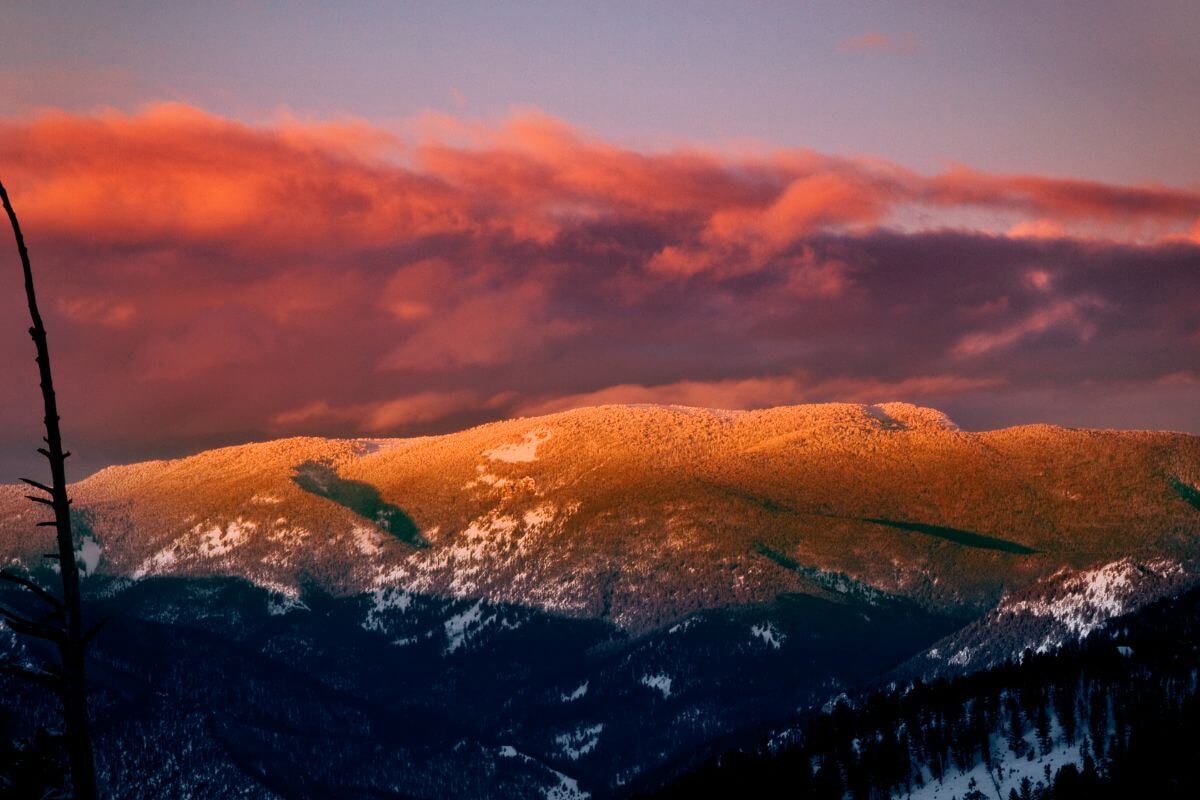
Montana is a wonderland of natural beauty, with its breathtaking mountain ranges offering some of the most stunning views in the country.
Whether you’re a seasoned hiker, a lover of scenic drives, or a social media influencer in search of Montana’s most instagrammable spots, these 11 must-see mountain views are sure to leave you spellbound.
1. Rocky Mountains
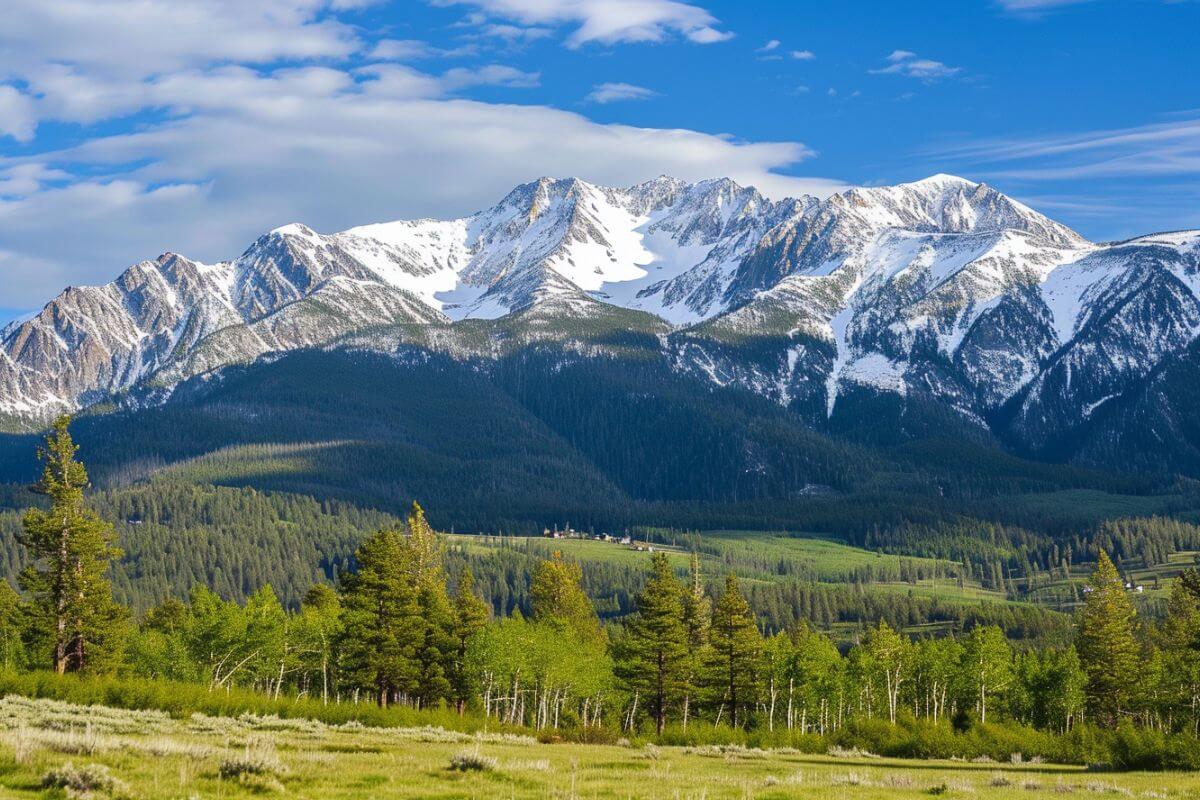
The vast expanse of the Rocky Mountains spans around 3,000 mi (4,828 km) across the southwestern, central, and northwest United States, extending further into northwest Canada. These iconic mountains cover the breathtaking Glacier National Park in Montana.
Geologically, the rocks that make up the mountains were formed before their elevated formation, and the interior mostly consists of pieces of continental crust over one billion years old.
| Aspect | Measurement |
|---|---|
| Highest Point | Mount Elbert |
| Elevation | 14,440 ft (4,401.2 m) |
| Mountain Range | 3,000 mi (4,828 km) straight-line distance |
| Width | 400 mi (650 km) |
| Total Area | 300,000 sq mi (777,000 sq km) |
They are part of the North American Continental Divide, a plateau that splits the mountains from northwestern Montana to northern British Columbia.
Public parks and forest lands protect much of the range and offer numerous opportunities for outdoor adventures, including hiking, camping, mountaineering, fishing, hunting, mountain biking, snowmobiling, skiing, and snowboarding.
For those interested in delving deeper into the history and culture of the area, the Museum of the Rockies in Bozeman, Montana is a potential destination not to be missed.
2. Beartooth Mountains
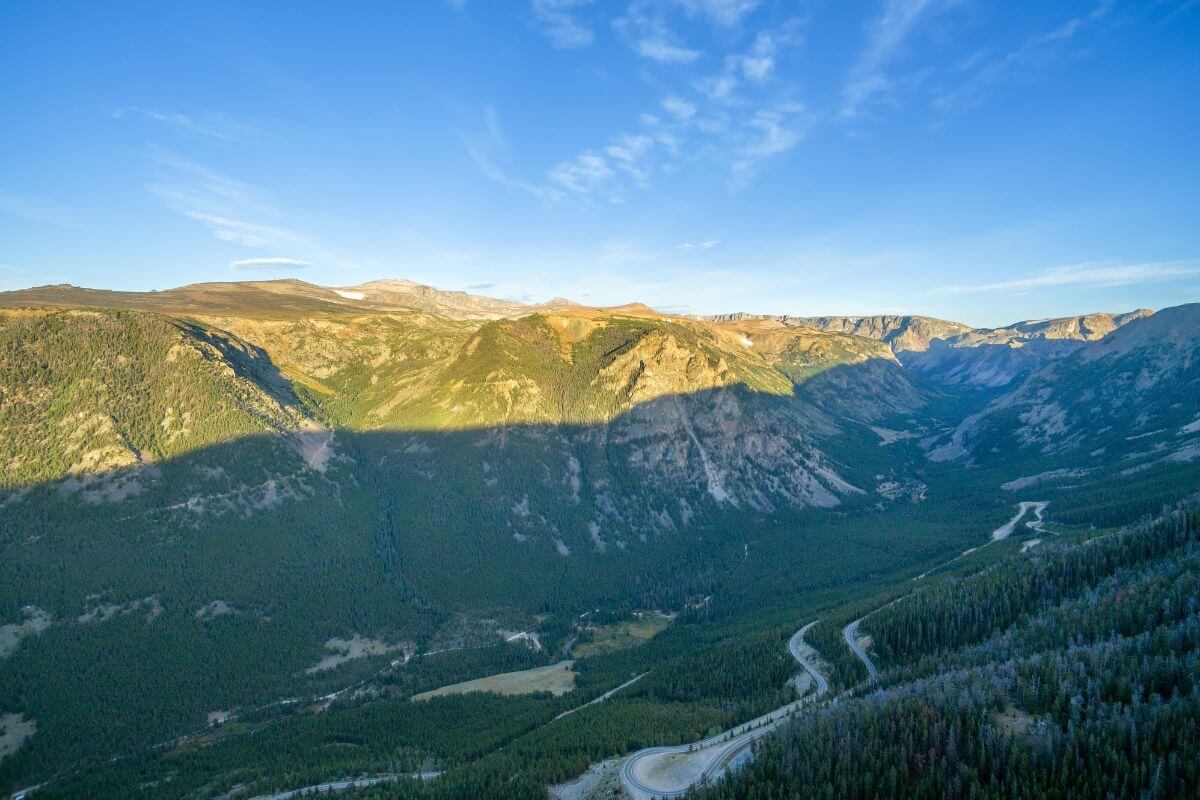
If you’re yearning to get up close and personal with Montana’s mountain majesty, a pilgrimage to the Beartooth Mountains is an absolute must.
Stretching across the south-central region of Big Sky Country and even dipping into northwest Wyoming, the Beartooth Mountains are a rugged paradise that forms part of the Absaroka-Beartooth Wilderness. This pristine expanse of nature spans three national forests: Custer, Gallatin, and Shoshone.
Why You Shouldn’t Miss the Beartooth Mountains:
- Granite Peak – At a staggering 12,807 ft (3,904 m), Granite Peak is the highest point in Montana. For those with an adventurous spirit, conquering this summit is the ultimate badge of honor.
- Gateway to Yellowstone – The Beartooths are practically Yellowstone National Park’s next-door neighbor. This proximity means you can easily combine a trip to both areas, immersing yourself in the wonders of the Greater Yellowstone Ecosystem.
- Beartooth Highway – Also known as U.S. 212, the Beartooth Highway is a scenic marvel and one of America’s most breathtaking mountain drives. It reaches its zenith at Beartooth Pass, a jaw-dropping 10,947 ft (3,337 m) above sea level.
- Recreational Haven – The Beartooths offer a playground for outdoor enthusiasts. From hiking and mountaineering to skiing and wildlife viewing, the options are as varied as the landscapes themselves.
- Seasonal Access – While the Beartooths are accessible from Memorial Day to mid-October, the weather can be fickle. Plan your visit during this window, and you’ll be rewarded with the full splendor of this Montana wilderness.
On a personal note, I hiked through the Beartooths in early summer, when the wildflowers were in full bloom, and the air was crisp and fragrant. The sight of a grizzly bear ambling in the distance was both exhilarating and humbling.
3. Bitterroot Mountains
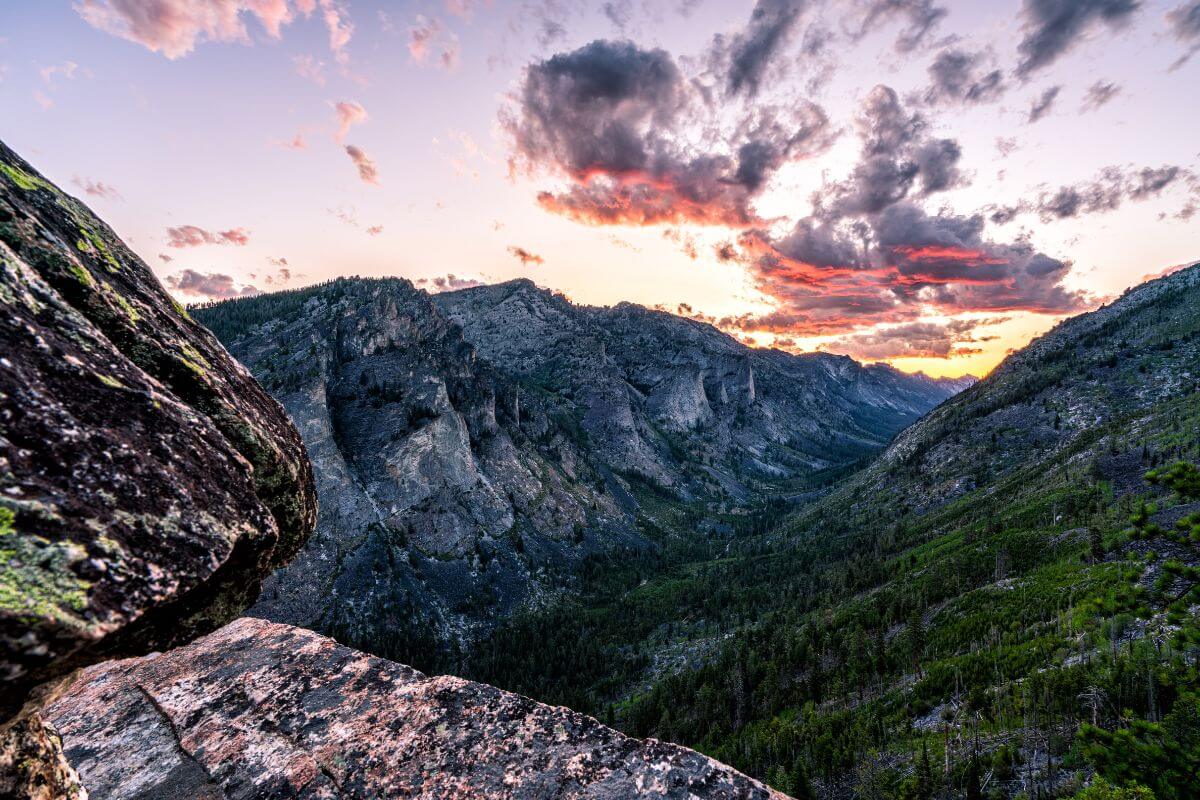
When it comes to mountain majesty, the Bitterroot Mountains are Montana’s crown jewel. Stretching an impressive 165 mi (265.5 km) long and 75 mi (120.7 km) wide, these rugged peaks and glaciated terrains cover an astounding 4,862 square miles along the Montana-Idaho border.
The Bitterroot Range is home to Trapper Peak, standing tall at 10,157 ft (3,095.8 m), and is a prominent feature in Montana’s largest mountain range. But it’s not just about the lofty heights; the Bitterroot Mountains also offer steep canyons that dramatically descend to the valley floor.
As someone who has hiked these mountains, let me tell you, the biodiversity here is astounding.
The dense forests of pine, fir, and cedar, and the open meadows dotted with wildflowers, you’ll surely find a tapestry of flora here. As for fauna, keep an eye out for mule deer, elk, mountain goats, and even the elusive moose.
The recreational opportunities in the Bitterroot Mountains are as vast as the landscape itself. Skiing in the winter and wildlife viewing year-round are particularly popular.
One of the most significant areas within the Bitterroot Mountains is the Bitterroot National Forest.
This forest, which encompasses a significant portion of the range, is a gateway to the largest continuous pristine wilderness in the United States — the Frank Church River of No Return and the Anaconda Pintler.
If you’re looking to immerse yourself in Montana’s untamed beauty, the Bitterroot Mountains should be high on your list.
4. Bighorn Mountains
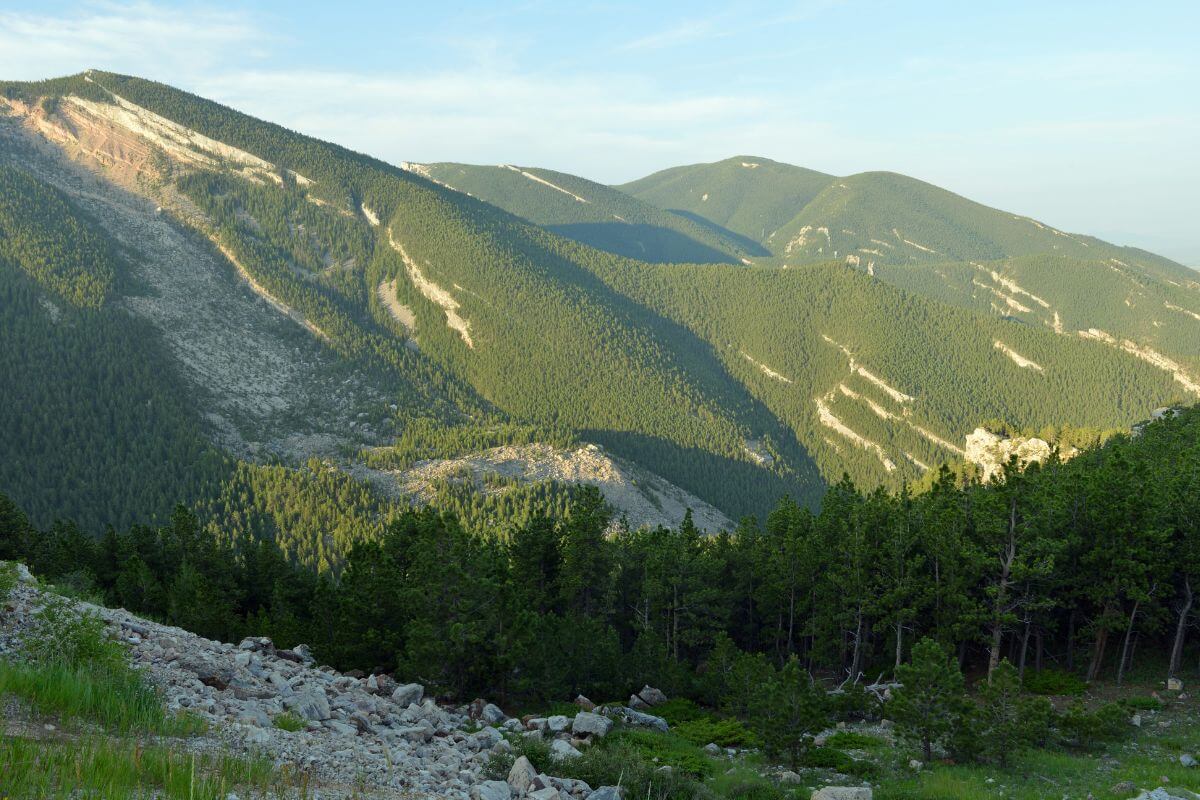
If you’re a fan of dramatic landscapes, the Bighorn Mountains are a must-see. Spanning roughly 30 mi (48.2 km) in width and 150 mi (241.4 km) in length, this range straddles the line between north-central Wyoming and southern Montana.
It’s not just the size that’s impressive; the Bighorn Mountains are also home to the Bighorn National Forest, a sprawling one million-acre expanse of camping grounds and recreational opportunities.
Here are some key features of the Bighorn Mountains that make them a top destination:
- Highest Point – Cloud Peak, towering at 13,175 ft (4,016 m), is the crown jewel of the range. The view from the top is unparalleled.
- Recreational Opportunities – Whether you’re into hiking, fishing, camping, or even snowmobiling, the Bighorn Mountains have something for everyone.
- Scenic Drives – The Bighorn National Forest boasts several scenic byways, including the Bighorn Scenic Byway (U.S. 14), the Cloud Peak Skyway (U.S. 16), and the Medicine Wheel Passage (U.S. 14A). Each offers its unique perspective of the range.
- Bighorn Canyon National Recreation Area – Nestled within the Bighorn National Forest, this area encompasses around 120,000 acres and features the stunning Bighorn Lake. It’s the perfect spot for water-based activities or simply taking in the view.
Whether you’re an avid hiker or simply someone who appreciates breathtaking vistas, the Bighorn Mountains should be on your Montana bucket list.
5. Crazy Mountains
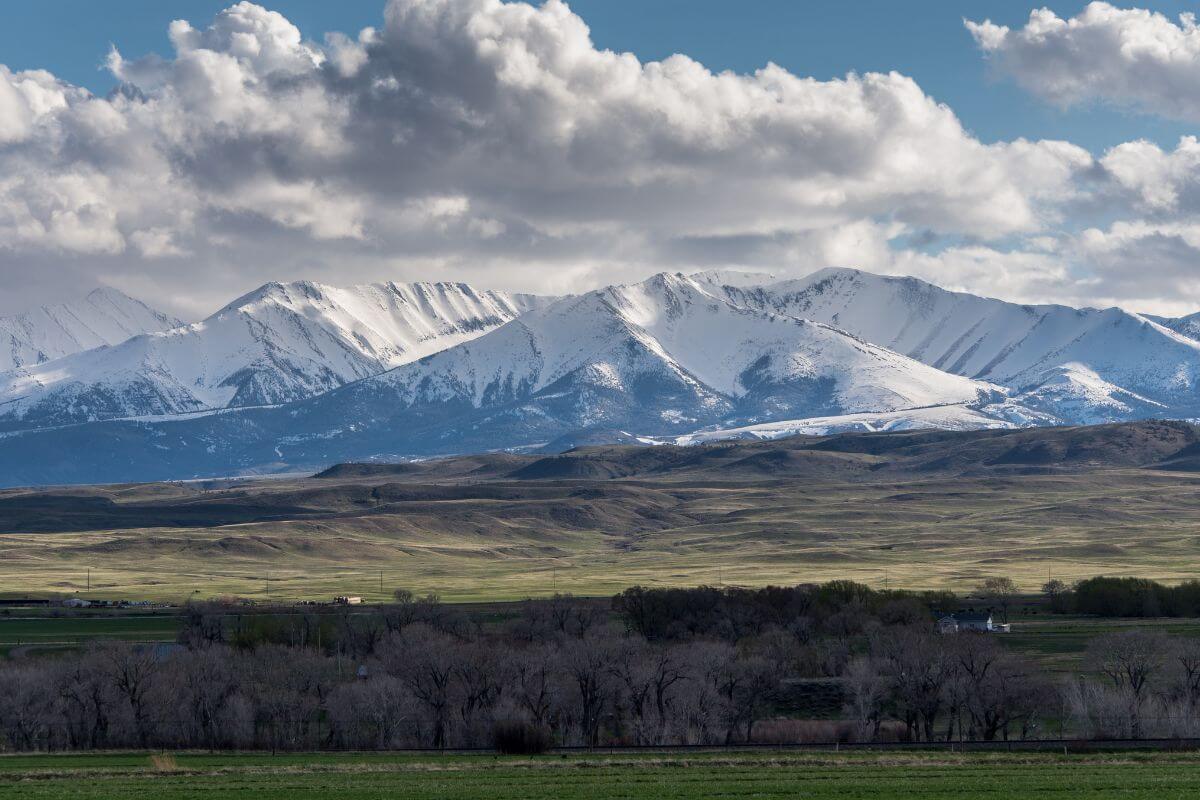
If you’re looking for a picturesque escape, the Crazy Mountains might just be what you need. Stretching 40 mi (64.3 km) from the Yellowstone Rivers to the Musselshell River, this sub-range within the Rocky Mountains is a hidden gem, boasting 40+ lakes and the stunning Grasshopper Glacier.
With over 30 peaks exceeding 10,000 ft (3,048 m), the steep slopes and jagged peaks of the Crazies promise a thrilling adventure. The tallest peak, Crazy Peak, stands at 11,214 ft.
For those seeking a camping experience, the Halfmoon Campground, located north of Big Timber Creek, serves as the perfect public access trailhead to the central Crazy Mountains. An ideal spot for visitors to set up camp, it also provides easy access to the breathtaking trails in the area.
Throughout the seasons, the Crazy Mountains offer a range of activities, from backcountry skiing and cross-country skiing to horseback riding and hiking.
Trails like the Cottonwood Lake Trail, Big Timber Creek Trail, and Trespass-Sweetgrass-Cottonwood Loop provide ample opportunities to explore and immerse yourself in the magnificent landscape.
The Crazy Mountains cater to both those in search of tranquility and those seeking thrilling experiences, offering something to suit every taste and preference.
6. Madison Range
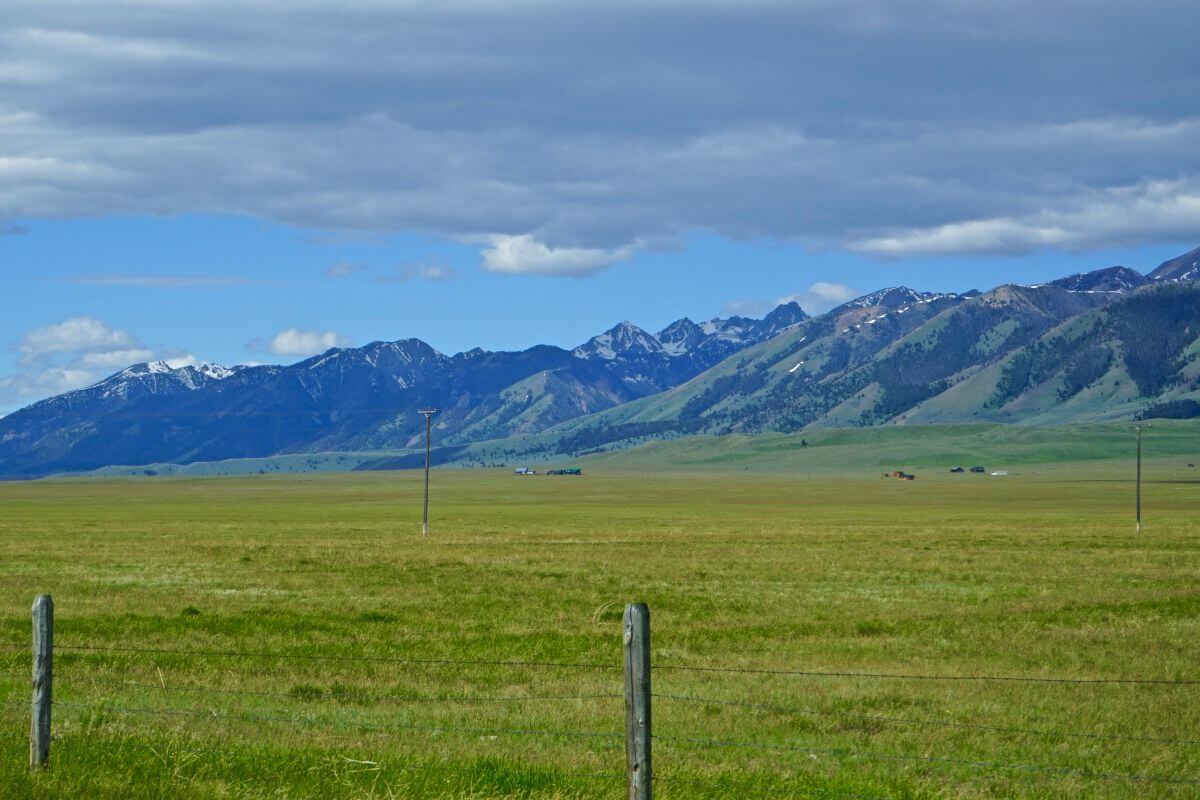
I’ve had the pleasure of exploring the Madison Range, a brilliant gem in the Greater Yellowstone Rocky Mountains. It covers
The range extends 80 mi (130 km) from West Yellowstone, Montana to Bozeman, Montana, and is flanked by the Madison River on the west and the Gallatin River to the east.
Its historical naming after James Madison by Meriwether Lewis during the Lewis and Clark Expedition adds an intriguing layer to its allure.
Why the Madison Range Is Worth Exploring:
- Highest Point – Hilgard Peak, standing tall at 11,316 ft (3,449 m), offers breathtaking panoramic views.
- National Forests – The Madison Range finds its home within the expansive Beaverhead-Deerlodge and Gallatin National Forests.
- Wildlife – From grizzlies and black bears to the occasional wolf pack, the range is a haven for diverse wildlife.
- Recreational Opportunities – Hiking, backpacking, and mountaineering are just a few of the adventures that await.
It’s truly a haven for those seeking to witness the raw and unspoiled beauty of the region. The Madison Range is a must-visit destination for any nature lover.
7. Mission Mountains
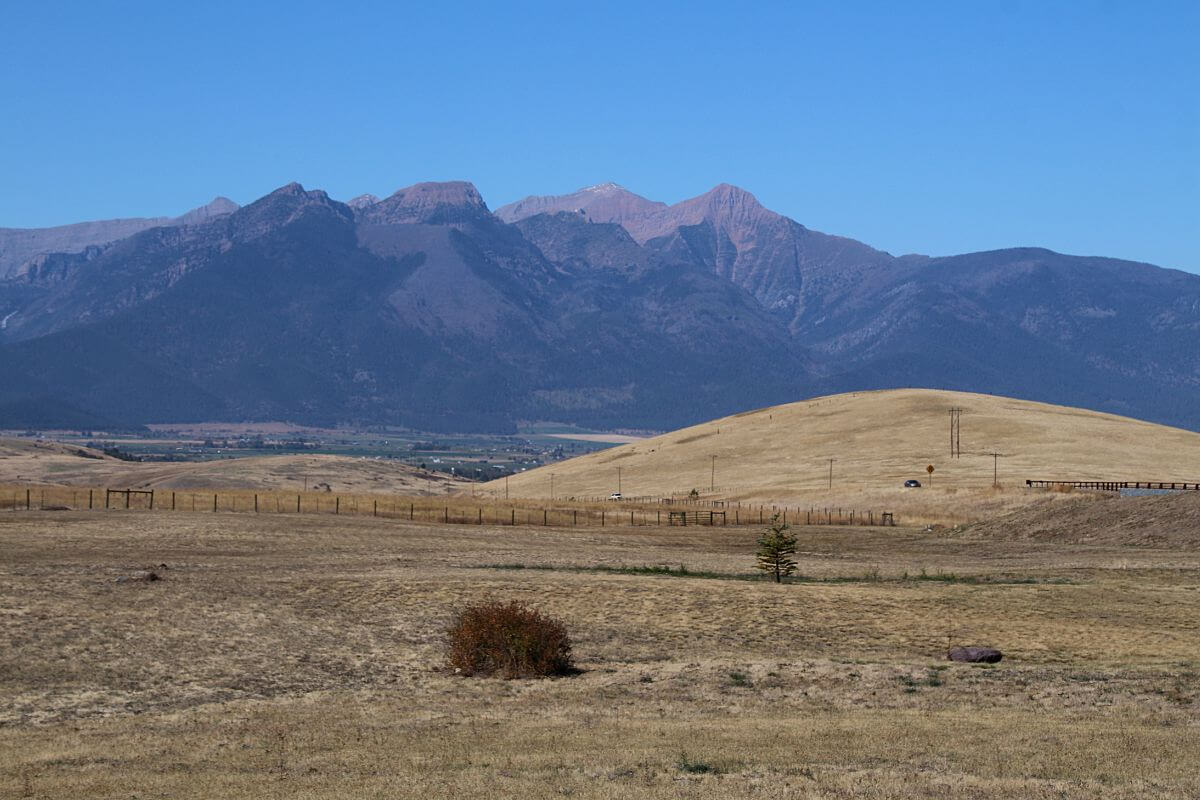
This scenic range is renowned for its glaciers, meadows, jagged peaks, and rock debris-formed slopes, offering access to the Mission Mountain Wilderness Area, which spans almost 74,000 acres (295.65 sq km), in northwestern Montana.
The prominent McDonald Peak, nearly reaching 10,000 ft (3,048 m), with an average elevation of around 7,000 ft (2,134 m) is managed by the Forest Service.
The area’s popularity is due to the organized camping and hiking trails, such as the Piker Lake Trail, Mission Reservoir Trail, Lucifer Lake Trail, and Cedar Lake Trail, which all attract visitors looking to experience the beauty and adventure of the Mission Mountains.
8. Big Belt Mountains
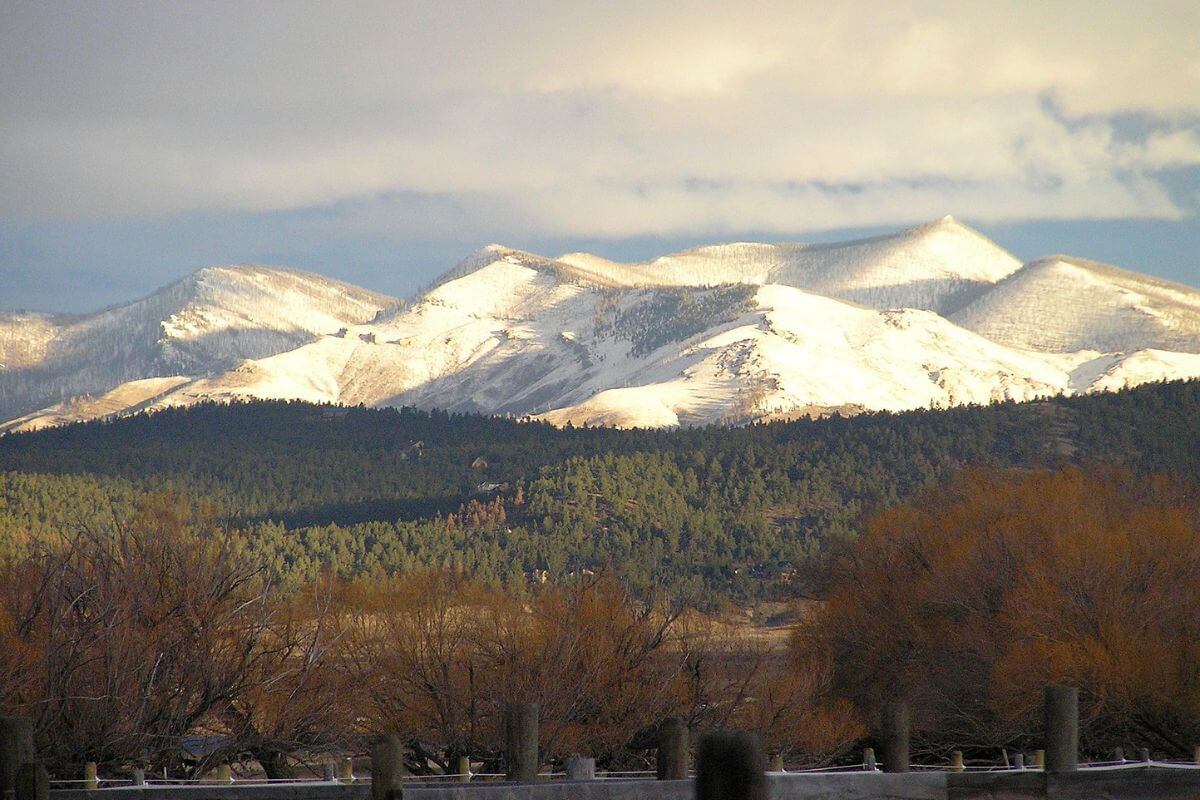
I recently had the opportunity to explore the Big Belt Mountains in Montana. Spanning Broadwater, Lewis and Clark, Meagher, Gallatin, and Cascade counties, this range of approximately 75 mi (120.7 km) offers a diverse landscape of grasslands, forests, and alpine meadows.
The highest point of the Big Belt Mountains, Mount Edith, reaches an impressive 9,504 ft (2,896.8 km), providing breathtaking views and opportunities for activities like hiking, backpacking, and mountaineering.
The historical significance of the Big Belt Mountains cannot be overlooked, as gold placer deposits were discovered in the gulches on the western slopes. This rich history adds an extra layer of intrigue to the area.
One of the most striking features of the Big Belt Mountains is the passage of U.S. Highway 12 through the range.
This major thoroughfare connects Townsend in the Missouri drainage to White Sulphur Springs in the upper Smith River drainage, making the range easily accessible for travelers looking to immerse themselves in its natural beauty and historical significance.
9. Bridger Range
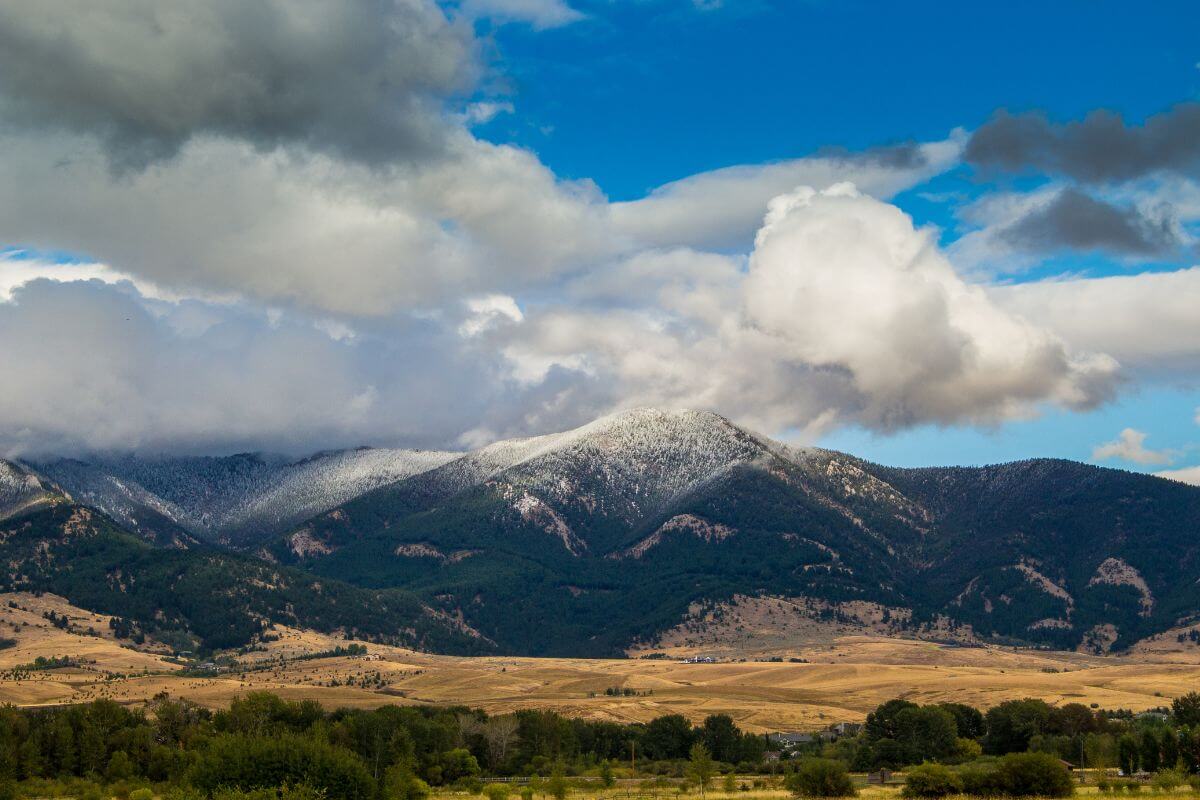
If Bozeman is Montana’s golden child, the Bridger Range is its celestial crown. This sub-range of the Rockies stretches for about 50 mi (80.4 km) from Mauldow to Bozeman, offering a scenic backdrop to one of the most livable cities in the state.
Reason Why You Should Visit the Brider Range:
- Hiking Havens – Trails like Fairy Lake Loop, Truman Gulch, and College “M” Trails offer diverse experiences for every level.
- Sacagawea Peak – The Bridger Range’s highest point at nearly 9,600 ft (2,926 m) offers panoramic views that are second to none.
- Seasonal Delights – From cross-country skiing in winter to camping in summer, the Bridger Range is a year-round playground.
The Bridger Range is a hiker’s dream, with trails like the Fairy Lake Loop and Truman Gulch beckoning you to explore their winding paths. For the more adventurous, the College “M” Trails offer a challenge with a rewarding view of Bozeman from above.
In winter, the range transforms into a cross-country skiing and snowshoeing paradise. I’ve had some of my most serene moments gliding across the snow-covered trails, the only sound being the whisper of the wind through the pines.
If you’re more of a summer camper, the Bridger Range has got you covered as well. With several campgrounds dotting its slopes, you can pitch your tent and wake up to sweeping mountain vistas.
The Bridger Range is a must-visit and with Bozeman just a stone’s throw away, you have the perfect blend of city comforts and mountain adventures at your fingertips.
10. Tobacco Root Mountains
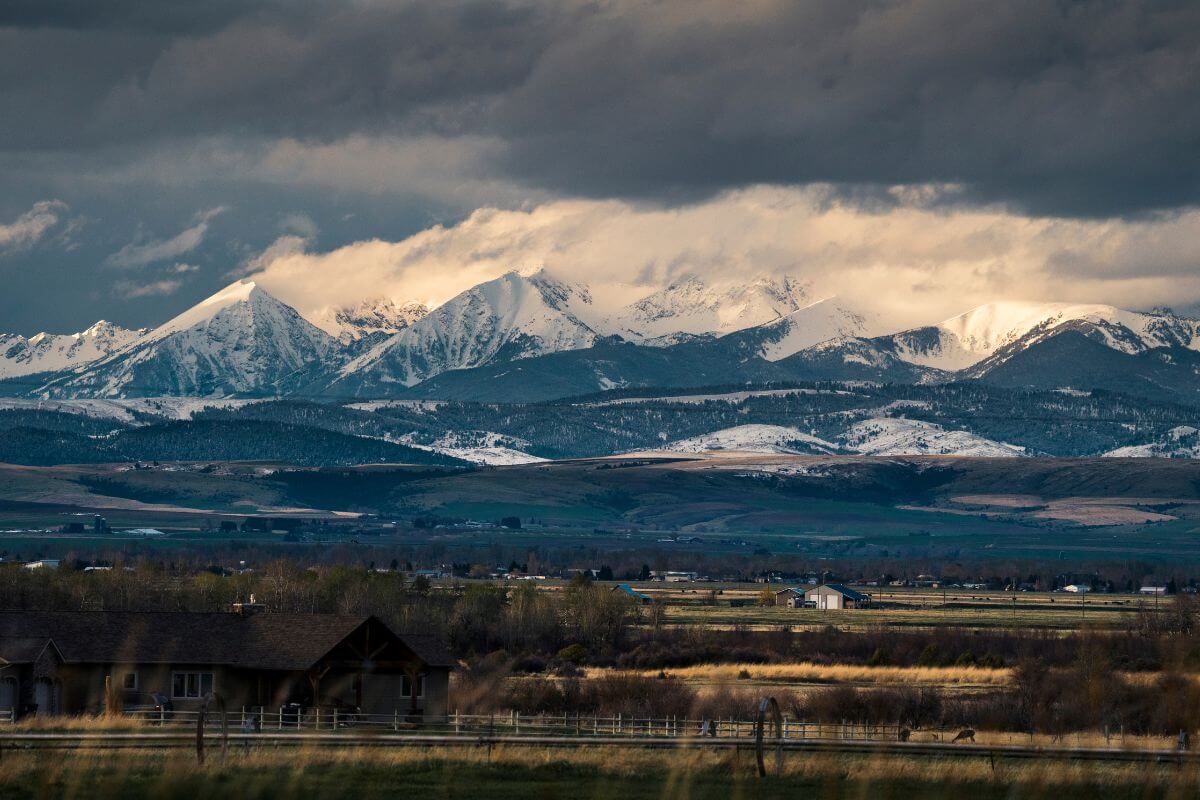
The Tobacco Root Mountains, nestled between Bozeman and Butte in southwest Montana, are renowned for their breathtaking scenic beauty.
The diverse landscape of the range, spanning from rolling sagebrush hillsides to rugged alpine peaks and lakes, offers a rich tapestry of natural wonders.
As the range ascends, it transitions from gentle hills of sagebrush to forests of Douglas fir and lodgepole pine, culminating in high-alpine peaks and lakes.
With 43 peaks rising to elevations greater than 10,000 ft (3048 m), including the highest peak, Hollowtop, at 10,604 ft (3,232 m), the Tobacco Root Mountains offer a striking visual spectacle.
Outdoor enthusiasts will find a plethora of recreational activities to indulge in, such as hiking, mountain biking, motorcycling, and ATVing. The range also boasts several high-elevation trails leading to alpine lakes, making it an attractive destination for adventure seekers.
Wildlife lovers will revel in the area’s diverse fauna, which includes elk, black bears, and a variety of “Tier I” species such as flammulated owls, bald eagles, Townsend’s big-eared bats, grizzly bears, and Canada lynxes.
The picturesque mountain views and scenic drives make the Tobacco Root Mountains an irresistible draw for visitors seeking a memorable outdoor experience.
11. Lewis Range
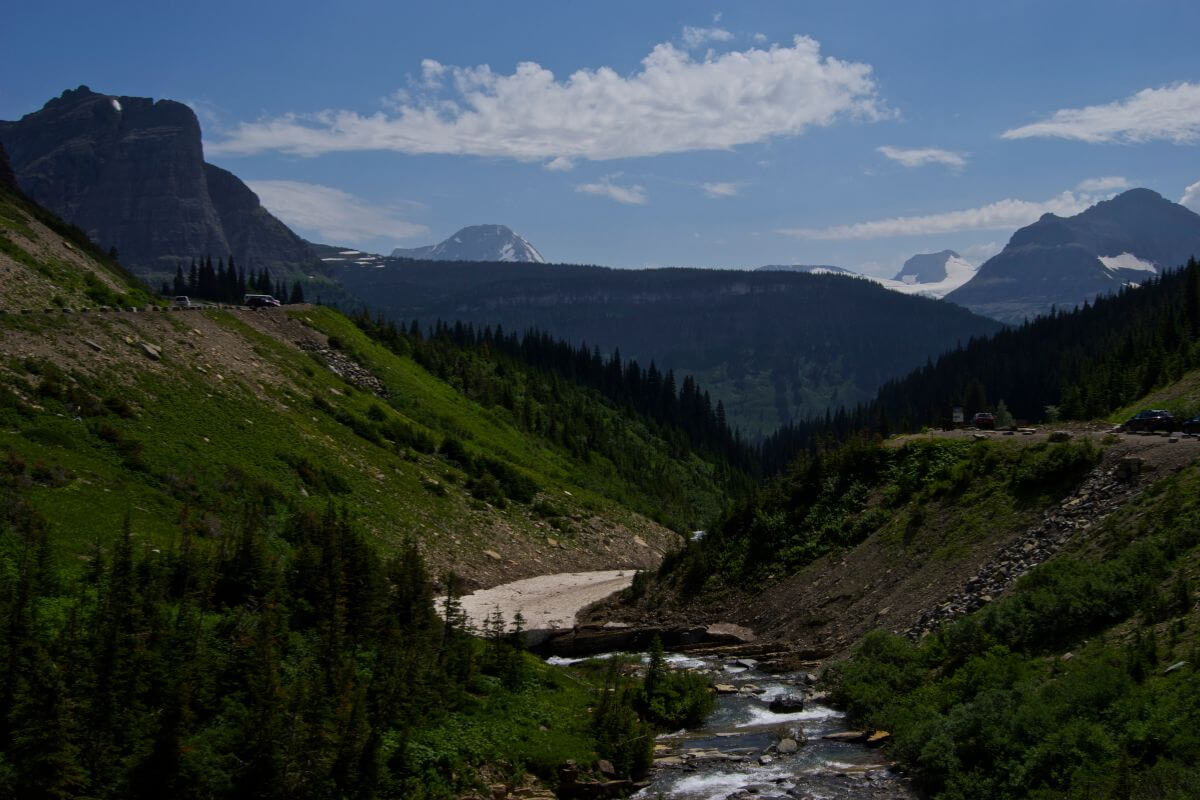
The Lewis Range, a scenic wonderland, spans from Waterton Lakes National Park in Alberta, Canada, to Montana’s Glacier National Park and the Bob Marshall Wilderness Complex.
Here’s why you should add it to your bucket list:
- Unique Geological History – The Lewis Overthrust, an ancient geological event, created a tapestry of rugged peaks and mineral-rich formations.
- Pristine Mountain Ecosystems – Glacier National Park and the Bob Marshall Wilderness Complex are the crown jewels of the Lewis Range. These areas offer not only breathtaking views but also some of the most untouched ecosystems on the planet.
- Prominent Peaks – Mount Cleveland, the highest peak at 10,479 ft (3,194 m), is just the tip of the scenic iceberg. The range is a playground for mountaineers and nature lovers alike.
- Recreational Activities – With over 1,000 mi (1,609.34 km) of hiking trails, the Lewis Range is a hiker’s paradise. You can also try your hand at fishing, camping, or wildlife spotting.
- Continental Divide – As if the range needed another claim to fame, the Continental Divide runs through its uppermost sections, adding a touch of grandeur to the already awe-inspiring scenery.
The Lewis Range is a true marvel, offering a perfect blend of geological wonders, pristine ecosystems, prominent peaks, and ample opportunities for outdoor adventure. It’s a destination that’s worthy of every traveler’s bucket list.
Montana Mountain Scenery Final Thoughts
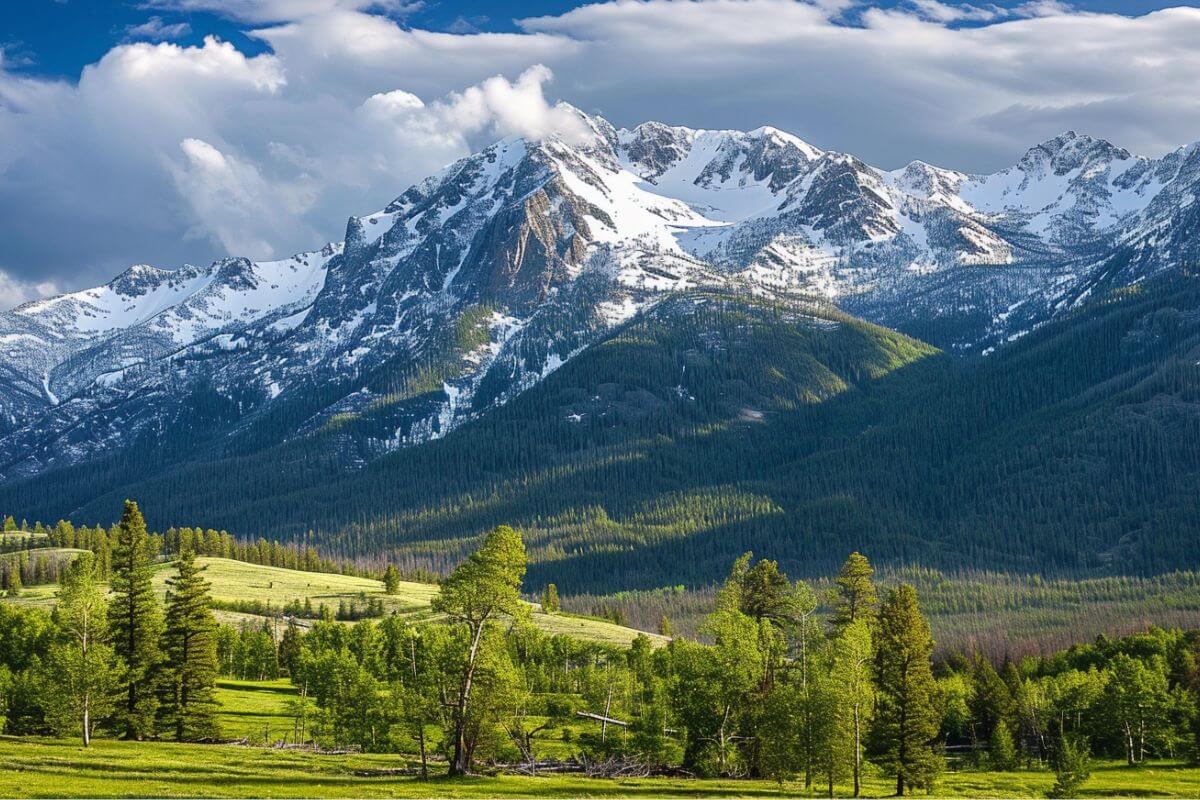
I’ve always been captivated by the diverse beauty of Montana’s scenic mountain ranges. The towering peaks of the Rocky Mountains, including Mount Elbert and Glacier National Park, the scenic Beartooths, and Granite Peak, each range offers a unique and mesmerizing landscape.
The Big Belt Mountains have a significant place in history, echoing a gold-laden past, while the Tobacco Roots and the Lewis Range offer historical and adventurous appeal.
Montana’s mountains are more than just geological formations; they are gateways to unforgettable adventures for outdoor enthusiasts.
Hiking, skiing, or seeking solace in nature’s embrace, these ranges offer an array of activities and experiences that are truly unparalleled. Montana’s beautiful mountain stunning scenery is a treasure waiting to be explored and cherished.
Montana Mountain Scenery FAQs
1. Where Is the Best Scenery in Montana?
Montana’s best scenery often lies within its mountainous regions. Glacier National Park showcases stunning vistas with its alpine lakes, glaciers, and towering peaks, while the Beartooth Highway offers breathtaking views of the Beartooth Mountains.
The serene landscapes of Yellowstone National Park, captivate visitors with its geysers, hot springs, and diverse wildlife, making these areas among the top spots for scenic beauty in Montana.
2. What Is the Most Mountainous Place in Montana?
Montana’s most mountainous regions are typically found in the western part of the state, primarily within the Rocky Mountains and its various sub-ranges.
Areas like Glacier National Park, the Beartooth Mountains near Yellowstone, and ranges such as the Bitterroots, Bridger, and Madison offer some of the most rugged and elevated terrains, making them among the most mountainous places in Montana.
3. Why Is Montana Famous?
Montana is renowned for its stunning natural landscapes, including Glacier National Park and Yellowstone, boasting geysers and diverse wildlife.
It’s also celebrated for its rich history, with tales of the Wild West, cowboy culture, and the preservation of Native American heritage, making it famous for its outdoor adventures and cultural significance.
4. What City in Montana Has Mountains?
Several cities in Montana are surrounded by or in proximity to mountain ranges. Bozeman, for instance, lies near the Bridger Range and the Gallatin Range, offering scenic views and outdoor activities like hiking and skiing.
Missoula is nestled amid the Bitterroot Mountains and the Sapphire Range, providing residents and visitors with access to stunning mountainous landscapes and recreational opportunities.
Don’t stop here! Dive into our archives for a wealth of related content:

